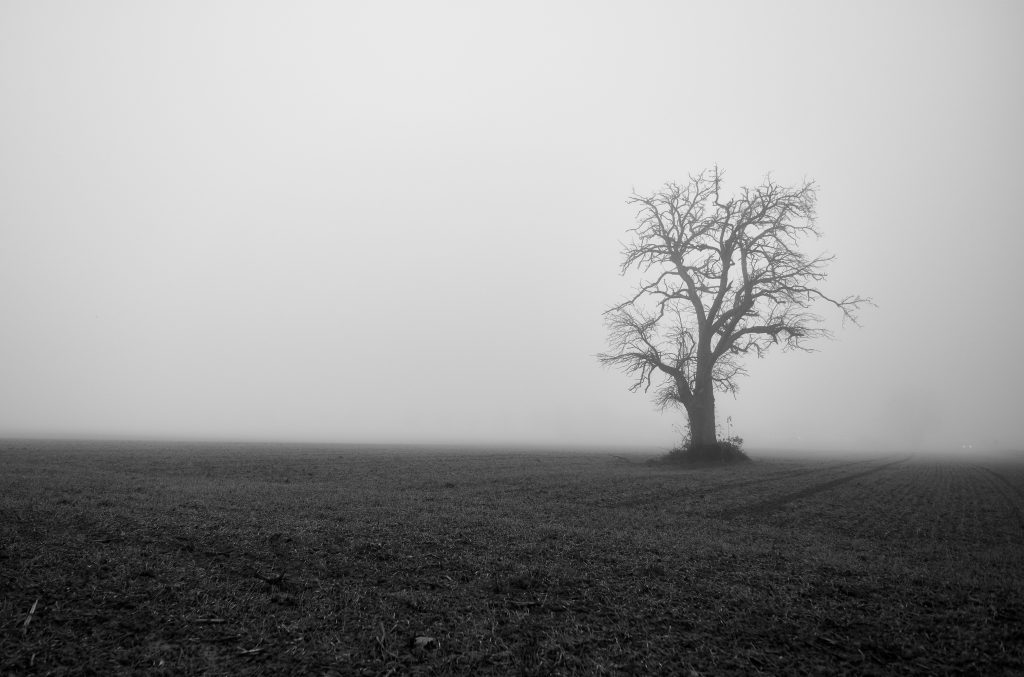
Usually, those drawn to woodturning have a special appreciation for wood and the trees it comes from. Trees are ancient and most of them have a lifespan much longer than our own. It only makes sense that they have accumulated quite a bit of folklore over time, some of which can be a little on the spooky side. In the spirit of Halloween, here are some interesting superstitions and creepy facts about some trees you may be familiar with. You’ve probably even turned a few of them on your wood lathe!
Unlucky trees
Many trees and their wood are considered unlucky for a variety of reasons. The source of these tales can sometimes be traced to a simple physical trait of the tree, such as the black walnut, which was said to be cursed because plants wouldn’t grow beneath it. The real reason for this phenomenon is that the black walnut tree secretes a chemical into the soil that many plants can’t tolerate. On the other hand, some superstitions about trees don’t seem to make sense at all.
Hawthorn: In England, bringing hawthorn into the house was said to spread misfortune to all who lived there. If someone slept in the same room as a sprig of hawthorn they would be overcome by illness.
Ash: In Iceland, it was thought that you should never burn ash in a hearth or for cooking because it would turn everyone in the home against one another.

Walnut: Because plants typically don’t grow underneath the black walnut tree, an old superstition said that the shadow of the walnut brought death. Dreaming of a walnut tree meant bad luck was coming and in Portugal, a person who planted a walnut tree was doomed to die once the tree trunk grew to be the same size as their body.
Elm: In Celtic mythology, elm trees were associated with the underworld and the fairies who guarded burial grounds. There is an old saying, “Elm hateth man, and waiteth.” This comes from the Elm tree’s tendency to drop large branches seemingly with no warning, allegedly on peoples’ heads or as an omen of impending death. The real reason for an elm to drop a branch on a warm, windless day “out of nowhere” is probably caused by insufficient moisture levels.
Cherry: In Japan, cherry trees were not planted in front of one’s house because they would scatter your luck and wealth like petals falling on the ground when the tree dropped its blossoms. At the same time, amulets carved from cherry branches were used to keep evil spirits away. Sometimes the trees were planted to comfort the spirits of the dead.
Pine: A row of pine trees planted along the edge of a property was sure to make you lose your land, and if you fell asleep under one you’d never wake up!
Witches, ghosts and magic trees

Witches, ghosts and other mystical creatures are often associated with trees in fairytales and folklore. Some trees were believed to be haunted, while others were supposed to help repel or scare away witches and ghosts.
Ash: Unlike in Iceland, some parts of the world believed ash wood could guard against witchcraft. Everything it touched was protected, from cattle to babies, and so its branches were woven around the horns of cows and placed near baby cradles.
Birch: In parts of Europe it was said that if you hit a witch with a birch broom it robbed them of their power. It was also supposed to repel evil fairies.
Holly: For hundreds of years, holly was believed to protect against lightning. People once planted holly near the front of their house for this reason. It was also said a witch couldn’t cross over a piece of holly so doors were sometimes built from its wood.
Rowan: Rowan is known as the “wizard’s tree” or “witchwood” because of its long list of mystical properties. Its presence guarded a home against lightning, witches, spirits of the dead and all misfortune. It was especially effective in protecting farm animals from curses cast by witches and was placed in stables and barns.
Elder: Throughout history, elder trees have been thought to contain spirits, witches or ghosts. That’s why it was frowned upon to cut even a twig from an elder without first asking permission from the tree. In some cases in England, it was believed that the tree would bleed when cut because it was a witch in disguise. Some folklore says that if you burned elder wood in your home the devil will appear.

Willow: The weeping willow is associated with mourning and sadness. In English lore, the willow tree could pull itself from the ground and stomp around, stalking unfortunate wanderers.
Exotic wood pen blanks with a story
It’s interesting to know that the wood you use to make custom pens or other lathe projects might have once been considered magical or mystical. Even though these tales are just for fun, there’s no denying that trees and wood are endlessly fascinating. Visit William Wood-Write for a huge selection of wood pen blanks and turning supplies. We promise they’re not haunted!






